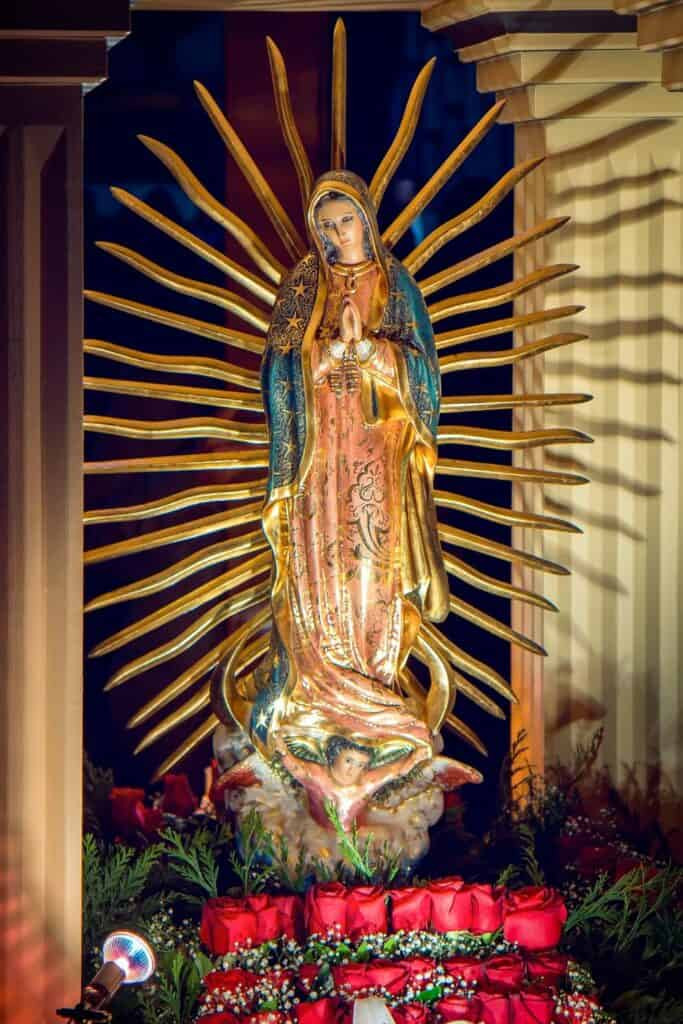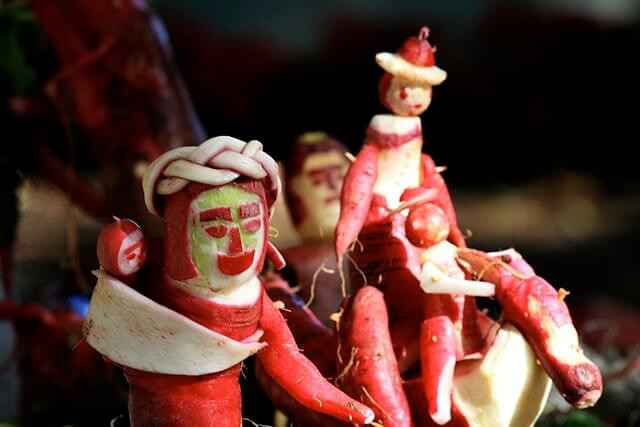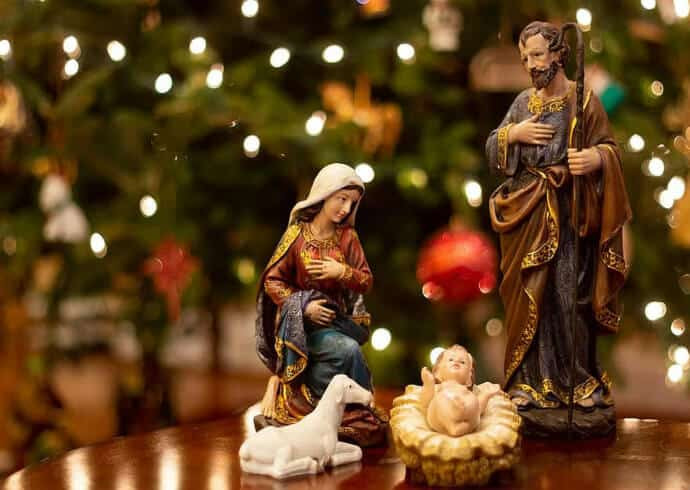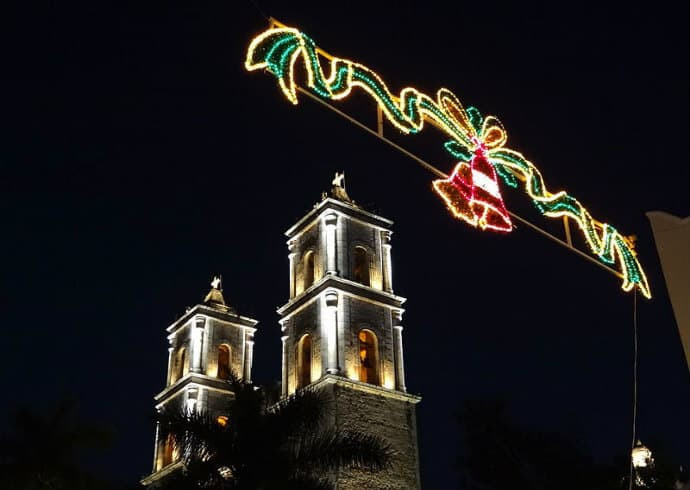Mexico, a land celebrated for its vibrant culture and rich history, embraces the Christmas season with a unique fervor that blends indigenous customs with Spanish Catholic traditions. As a content creator for gaymexico.net, and a passionate expert on Mexican culture, I’m excited to guide you through the fascinating world of Mexican Christmas Traditions. More than just a holiday, Christmas in Mexico, or Navidad, is a prolonged celebration filled with religious significance, family gatherings, mouthwatering food, and joyous festivities that extend from early December well into the New Year. Let’s unwrap the enchanting layers of this festive season and explore what makes Mexican Christmas traditions so special.
A Festive Tapestry: Origins and Key Dates of Christmas in Mexico
The roots of Christmas celebrations in Mexico trace back to the Spanish colonization in the 16th century. Spanish missionaries introduced Catholicism, and with it, the traditions of Christmas. Over centuries, these European customs intertwined with pre-Hispanic indigenous practices, giving birth to the distinctive Mexican Christmas we know today.
The festive season in Mexico isn’t a single day, but a vibrant marathon that officially kicks off on December 12th and extends until February 2nd. However, the core celebrations are concentrated between December 16th and January 6th.
Las Posadas: The Nine-Day Pilgrimage
One of the most iconic Mexican Christmas traditions is Las Posadas. Starting on December 16th and continuing for nine nights until Christmas Eve, Las Posadas reenact Mary and Joseph’s search for lodging in Bethlehem before the birth of Jesus. Each evening, processions of children and adults, carrying candles and singing traditional songs, go from house to house, symbolically seeking shelter.
 Children participating in Las Posadas, a significant Mexican Christmas tradition, carrying candles and dressed in festive attire.
Children participating in Las Posadas, a significant Mexican Christmas tradition, carrying candles and dressed in festive attire.
“Posada” means “inn” or “lodging” in Spanish. Traditionally, a designated “innkeeper” initially refuses them entry, but eventually, recognizing them, welcomes them inside. This symbolic journey culminates in a joyful party at a different home each night, filled with traditional Mexican Christmas food, drinks, music, piñatas, and dazzling fireworks.
Las Pastorelas: The Shepherd’s Play
Adding a theatrical dimension to the celebrations are Las Pastorelas, or Shepherd’s Plays. These traditional Mexican Christmas plays depict the journey of the shepherds to Bethlehem to witness the Nativity. Often infused with humor and local flavor, Pastorelas portray the shepherds’ struggles and temptations as they are often mischievously hindered by devils, representing the eternal battle between good and evil. Ultimately, the shepherds triumph and reach Baby Jesus, symbolizing the victory of good.
Noche Buena: The Sacred Night
Christmas Eve, or Noche Buena (the Good Night), holds immense significance in Mexican Christmas traditions. It marks the culmination of Las Posadas and is the most important night of the Christmas season. Families gather for a grand Christmas Eve dinner, often after attending the Misa de Gallo. While Christmas Day itself is also celebrated, it is generally a more relaxed day following the excitement of Noche Buena.
Misa de Gallo: The Mass of the Rooster
At midnight on Christmas Eve, many devout families attend a special Christmas Mass known as Misa de Gallo, or “Mass of the Rooster.” Legend says that a rooster crowed the night Jesus was born. This midnight mass is a deeply spiritual experience, followed by even more exuberant fireworks displays than usual, heralding the arrival of Christmas Day.
Day of the Immaculate Conception and Day of Our Lady of Guadalupe: Spiritual Pillars
While the official Mexican Christmas celebration is considered to begin on December 12th, it is preceded by the Day of Immaculate Conception on December 8th. This day, though not a public holiday in Mexico in terms of business closures, is a significant religious observance. It honors the Catholic belief that Mary, the mother of Jesus, was conceived without sin.
December 12th marks the Day of Our Lady of Guadalupe, a profoundly important religious and cultural holiday in Mexico. Millions of pilgrims from across the globe journey to the Basilica de Guadalupe in Mexico City to venerate the image of the Virgin of Guadalupe, a dark-skinned depiction of Mary, considered the Patron Saint of Mexico. This day is a national holiday, often observed with feasts and vigils, and it deeply intertwines Mexican Christmas traditions with national identity. The story of Juan Diego, an indigenous Aztec convert who witnessed the apparition of the Virgin Mary, is central to this devotion and represents a powerful symbol of faith and Mexican heritage.
Los Santos Inocentes: A Day of Lighthearted Trickery
December 28th brings Los Santos Inocentes (Day of the Innocent Saints), a day commemorating the innocent children King Herod ordered to be killed in his attempt to eliminate Baby Jesus. Interestingly, this solemn historical event is observed with lighthearted pranks and jokes, much like April Fool’s Day in other cultures. This unique Mexican Christmas tradition involves telling playful lies and pulling pranks, a symbolic, albeit indirect, reference to the biblical story of deception.
New Year and La Candelaria: Extending the Festivities
The Christmas spirit seamlessly blends into New Year celebrations in Mexico. A fun Mexican New Year tradition involves eating 12 grapes at midnight, one for each bell chime, symbolizing wishes for the twelve months of the coming year.
The Christmas season officially concludes on February 2nd with La Candelaria (Candlemas). This final holiday related to Christmas in Mexico is marked by parties and gatherings. In some regions, like Veracruz, La Candelaria is celebrated with large festivals, parades, and even bullfights, showcasing the diverse regional expressions of Mexican festive culture.
Regional Christmas Traditions: A Mosaic of Celebrations
Mexico’s vast and diverse landscape means that Mexican Christmas traditions are not monolithic but rather a rich mosaic of regional customs.
Oaxaca City, for example, hosts the unique Noche de Rábanos (Night of the Radishes) on December 23rd. This artistic festival features incredibly intricate carvings made from radishes, depicting nativity scenes, historical events, and mythical figures.
 Intricate radish carvings displayed at the Night of the Radishes festival in Oaxaca, a unique regional Mexican Christmas tradition.
Intricate radish carvings displayed at the Night of the Radishes festival in Oaxaca, a unique regional Mexican Christmas tradition.
In the Xochimilco borough of Mexico City, the Niñopa, a revered image of Baby Jesus, is passed into the care of a different family each year. This “sponsor family,” or mayordomo, becomes responsible for hosting various festivities throughout the year, including celebrations during Candlemas and Day of the Child, highlighting the community and religious aspects of Mexican Christmas traditions.
The Costa Chica region of Oaxaca and Guerrero, home to a significant Afro-Mexican population, celebrates Fiesta Negrohispana during Las Posadas. This festival is a vibrant celebration of Afro-Mexican identity and heritage, interwoven with the Christmas season, showcasing the diverse cultural tapestry of Mexico.
Savoring the Flavors: Christmas Food in Mexico
No Mexican Christmas celebration is complete without a delectable array of traditional dishes. Food plays a central role in bringing families together and creating a festive atmosphere.
Pozole, a hearty and flavorful soup, is a Christmas Eve staple. This rich broth is made with hominy, pork or chicken, and chili peppers, garnished with shredded cabbage, radishes, onions, and lime.
Romeritos, another quintessential Mexican Christmas food, feature seepweed, a green vegetable, cooked in a complex mole sauce, often with potatoes and shrimp.
Ensalada Nochebuena, or Christmas Eve Salad, is a refreshing and colorful salad incorporating seasonal fruits and vegetables like beets, oranges, jicama, and pomegranate seeds, dressed with a citrus vinaigrette.
For desserts, Buñuelos are a must-try. These crispy, fried pastries are dusted with cinnamon sugar or drizzled with a piloncillo sugar syrup. They can be flat and round or shaped into various forms.
To warm up on chilly December nights, Ponche, a hot fruit punch, is a popular choice. This aromatic drink is made with fruits like tejocotes, guavas, apples, and prunes, spiced with cinnamon and piloncillo.
Adults may enjoy Rompope, a rich and creamy eggnog-like drink, often enhanced with rum or other spirits, adding a touch of warmth to Mexican Christmas gatherings.
On Epiphany, January 6th, families gather again to share Rosca de Reyes, a special ring-shaped cake, also known as Three Kings Cake. Hidden inside the cake is a small plastic figurine of Baby Jesus. Whoever finds the figurine is traditionally obligated to host a tamale party on Candlemas (February 2nd), extending the festive spirit.
 Rosca de Reyes, a traditional sweet bread eaten during Mexican Christmas celebrations, decorated with candied fruits.
Rosca de Reyes, a traditional sweet bread eaten during Mexican Christmas celebrations, decorated with candied fruits.
Adorning Homes and Hearts: Mexican Christmas Decorations
Mexican Christmas decorations are known for their vibrancy, symbolism, and handcrafted charm.
Piñatas, especially star-shaped ones with seven points, are not just for parties but carry symbolic meaning during Christmas. The seven points represent the seven deadly sins. Breaking the piñata, traditionally while blindfolded, symbolizes overcoming temptation and blind faith, with the candy inside representing divine rewards.
Nativity scenes, or Nacimientos, are arguably the most important Mexican Christmas decorations. Often elaborate and extensive, Nacimientos recreate the scene of Jesus’ birth. Families meticulously set them up, sometimes for weeks, adding figures gradually, such as Baby Jesus on Christmas Eve and the Three Wise Men on Epiphany. In many homes, Nacimientos take precedence over Christmas trees.
Poinsettias, known in Mexico as Nochebuenas (Christmas Eve flowers), are native to Mexico and are ubiquitous Mexican Christmas decorations. Their vibrant red color is associated with Christmas and symbolizes purity in Catholic tradition.
Luminaries, or farolitos, paper lanterns, are another common sight, especially during Las Posadas. These lanterns symbolize guiding the way for Mary and Joseph, casting a warm and festive glow.
 Poinsettia flowers, also known as Nochebuenas, used as traditional Mexican Christmas decorations.
Poinsettia flowers, also known as Nochebuenas, used as traditional Mexican Christmas decorations.
Christmas Trees in Mexico: A Relatively Recent Tradition
While Nacimientos hold a more traditional place, Christmas trees have gained popularity in Mexico, especially in urban areas.
The introduction of Christmas trees to Mexico is attributed to Emperor Maximilian I in the 1860s. Inspired by European customs, he had a Christmas tree erected in Mexico City, sparking interest among Mexicans.
Today, both real and artificial Christmas trees are common in Mexican Christmas celebrations. Decorations are often bright and colorful, reflecting the festive spirit of Mexican culture.
Authentic Mexican Christmas ornaments are often handcrafted using natural materials like straw, tin, and clay, showcasing local artistry.
Ornaments frequently feature religious motifs like angels and stars, as well as local symbols such as cacti, clay pots, and parrots, blending traditional Christmas imagery with Mexican iconography.
Mexico even holds records for hosting the world’s largest Christmas tree in 2009 and creating the largest angel ornament made entirely of recycled beer bottles, showcasing Mexican creativity and festive enthusiasm.
Santa Claus in Mexico: A Blending of Traditions
Santa Claus, or Santa Clos or Papa Noel as he is known in Mexico, is a more recent addition to Mexican Christmas traditions, largely influenced by American commercialization in the mid-20th century.
Traditionally, the Three Wise Men, Los Reyes Magos, have been the primary gift-bringers in Mexican culture, arriving on January 6th, Epiphany, to bestow gifts upon children, commemorating their visit to Baby Jesus.
Despite the prominence of the Three Kings, Santa Claus has found his place in Mexican Christmas celebrations. Often, children receive gifts from both Santa Claus around Christmas Eve and from the Three Wise Men on January 6th, creating a double dose of holiday cheer.
If Santa does visit, he typically arrives on the night of December 23rd or the morning of Christmas Eve, adding to the anticipation leading up to Noche Buena.
Sounds of the Season: Christmas Music in Mexico
Music is integral to Mexican Christmas traditions, filling the air with joyful melodies and festive rhythms.
Mexican Christmas songs are called Villancicos. These traditional carols, often with Spanish origins, are sung throughout the Christmas season, especially during Las Posadas and family gatherings.
“Canto Para Pedir Posada” is a quintessential Villancico sung during each night of Las Posadas. Groups divide into “pilgrims” outside and “innkeepers” inside the house, singing verses back and forth, narrating Mary and Joseph’s plea for shelter.
New Year’s carols, like “Rama Navideña,” celebrating the tradition of carrying a decorated branch representing the Holy Family, and “Cinco Pa’Las Doce” (Five to Twelve), heralding the New Year, are also part of the Mexican Christmas and New Year music repertoire.
“Los Peces en el Río” (The Fish in the River) is a beloved Villancico depicting the Virgin Mary washing baby Jesus’ clothes in the river.
More contemporary Mexican Christmas songs like “Canta, Rie, Bebe” (Sing, Laugh, Drink) encourage joyful celebration.
Traditional carols like “Vamos, Pastores, Vamos” (Let’s Go, Shepherds, Let’s Go), recounting the shepherds’ journey to Bethlehem, and “Ya Vienen los Reyes,” (The Kings are Coming), anticipating the arrival of the Three Wise Men, add to the rich tapestry of Mexican Christmas music.
 A festive street scene during Christmas in Mexico, showcasing the vibrant atmosphere of Mexican Christmas traditions.
A festive street scene during Christmas in Mexico, showcasing the vibrant atmosphere of Mexican Christmas traditions.
Conclusion: Embracing the Warmth of Mexican Christmas Traditions
Mexican Christmas traditions offer a captivating blend of spirituality, festivity, and cultural richness. From the poignant reenactment of Las Posadas to the joyous feasts, vibrant decorations, and soul-stirring music, Christmas in Mexico is an immersive cultural experience. It’s a time for families to unite, communities to celebrate, and for everyone to embrace the warmth and magic of the holiday season, Mexican style. Exploring these traditions reveals the heart of Mexican culture – a vibrant tapestry woven with faith, family, and a zest for life.